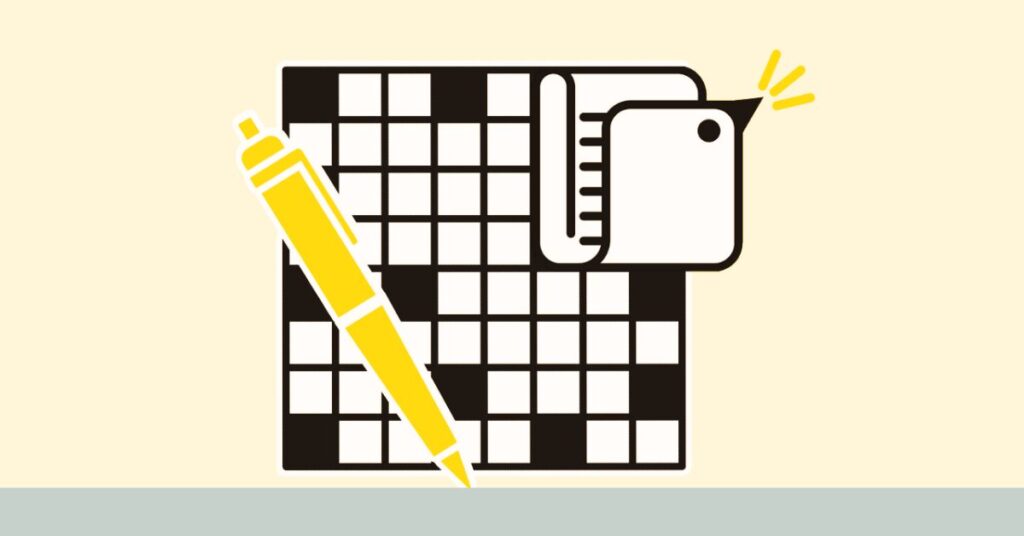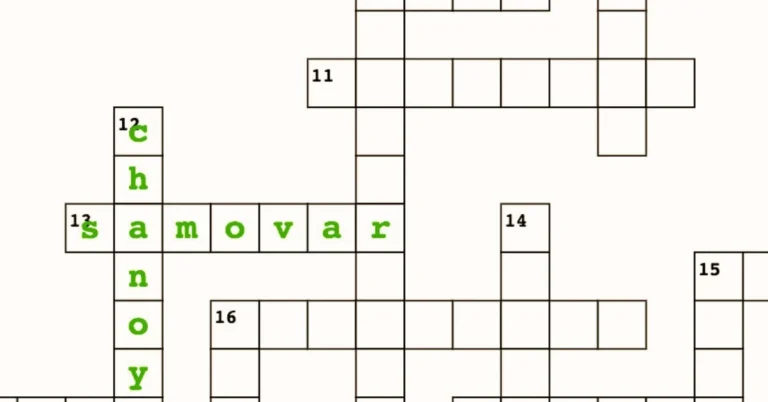For puzzle enthusiasts, few things are as satisfying as solving a challenging crossword. The thrill of fitting words into the grid, the sense of accomplishment when you finally solve a tricky clue, and the joy of completing the entire puzzle are unmatched. Among the vast array of crosswords available today, the Spot of Tea NYT Crossword holds a special place for many. This iconic crossword puzzle, a staple in The New York Times, offers a delightful blend of intellectual challenge, cultural references, and a dash of humor. In this essay, we will explore the appeal of the Spot of Tea NYT Crossword, its history, and the experience of solving it, while also examining why it has become a cherished ritual for so many.
The Origins of the New York Times Crossword
The New York Times crossword puzzle was first introduced in 1942 by a man named Arthur Wynne, who was a journalist and puzzle constructor. However, it wasn’t until 1950 that it truly became a regular feature in the paper. Over the years, the crossword evolved from simple wordplay to become one of the most popular and challenging puzzles in the world. Many fans today find themselves returning to the Spot of Tea NYT Crossword every day as part of their routine, a puzzle that has endured through generations.
In the world of crossword puzzles, the Spot of Tea NYT Crossword is unique for several reasons. For starters, it often features a witty sense of humor and a blend of contemporary culture, classic literature, history, and wordplay. Many solvers also appreciate the fact that the puzzle’s difficulty level increases as the week progresses, with Monday puzzles being relatively easy and the puzzles toward the end of the week, such as Thursday, Friday, and Saturday, providing more complex challenges.
Why the Spot of Tea NYT Crossword Is So Addictive

There’s something inherently satisfying about solving a crossword, and the Spot of Tea NYT Crossword is no exception. The sense of accomplishment that comes with filling in the squares one by one creates a deep sense of satisfaction. What makes this puzzle particularly addictive, however, is its ability to stimulate the mind while providing a bit of relaxation. It is like the perfect “spot of tea” — a pause in the day to engage with something intellectually stimulating but not overwhelming. The Spot of Tea NYT Crossword provides just enough of a challenge to keep you engaged without being too frustrating.
Moreover, there is a specific joy in deciphering a clue after pondering it for a while. Some clues in the Spot of Tea NYT Crossword are straightforward, while others require solvers to think outside the box or make connections to pop culture or obscure facts. For example, a clue might read: “A British beverage, commonly enjoyed in the afternoon (4 letters),” and the answer is “tea.” Simple, right? But then, a more complicated clue might appear, and that is where the true fun begins. This combination of accessibility and challenge is what makes the Spot of Tea NYT Crossword so appealing to solvers of all skill levels.
The Puzzles Reflecting Contemporary Culture
One of the reasons why the Spot of Tea NYT Crossword remains relevant is its ability to incorporate references to current events, pop culture, and contemporary figures. This approach makes the puzzle feel fresh, as it reflects the world outside the grid. For instance, solvers might find clues referencing trending television shows, new movies, or even viral internet moments. This allows solvers to feel connected to the world around them as they work their way through the puzzle, making it a timely yet timeless tradition.
The Spot of Tea NYT Crossword also includes references to literature, historical events, and world geography. These diverse clues provide opportunities for solvers to learn new facts, enhancing their knowledge in a fun, engaging way. The balance of different themes — culture, history, and wordplay — is what gives the puzzle its distinctive flavor. Whether you’re a seasoned crossword solver or a newcomer, every puzzle offers something to discover.
The Ritualistic Nature of Solving a Crossword
For many, solving the Spot of Tea NYT Crossword is more than just a way to pass the time. It becomes part of their daily routine. Whether it’s with a cup of tea in hand in the morning or as a calming activity before bed, the crossword provides a comforting ritual. Many solvers take pride in completing the puzzle as a way to feel mentally sharp and productive, and it is often a communal activity in families, workplaces, or even online forums where solvers discuss strategies and share their victories and frustrations.
This ritualistic aspect is particularly strong with the Spot of Tea NYT Crossword, as it offers not only a challenge but also an opportunity for reflection and relaxation. It is a chance to take a break from the demands of daily life and immerse oneself in a quiet, solitary activity that allows for focus and concentration. It’s the perfect way to unwind, and for many, it has become synonymous with the idea of taking a break with a “spot of tea.”
The Evolution of the Spot of Tea NYT Crossword
Over the years, the Spot of Tea NYT Crossword has evolved to include more creative clues and intricate designs. Early crosswords, while still challenging, were simpler in format and less ambitious in their clue construction. Today’s crosswords, especially in The New York Times, are designed by some of the most skilled puzzle constructors in the world. Many constructors bring their own unique style to the puzzles, whether it’s through clever wordplay, obscure references, or innovative clue formats.
One key feature of modern crosswords is the introduction of theme-based puzzles. In these puzzles, solvers are tasked with discovering a hidden theme that ties all the clues together. This adds an additional layer of difficulty and fun to the Spot of Tea NYT Crossword, requiring solvers to think beyond individual answers and consider the broader context of the puzzle. It is a reminder that solving a crossword isn’t just about filling in blanks — it’s about understanding how the pieces fit together.
The Sense of Community Around the Spot of Tea NYT Crossword
One of the most remarkable things about the Spot of Tea NYT Crossword is the community that has formed around it. There are many online forums, discussion boards, and social media groups where solvers from all over the world share their insights, tips, and even frustrations. The sense of camaraderie and support among crossword enthusiasts makes solving the puzzle a shared experience, even though it is an individual activity.
For those who might struggle with particularly challenging clues, these online communities provide a place to seek help and learn new solving strategies. Whether it’s finding the perfect word for a tricky 7-letter answer or figuring out how to interpret a particularly obscure clue, the Spot of Tea NYT Crossword community is there to help. This collaborative spirit enriches the experience, making it feel like a team effort even if you’re solving the puzzle solo.
The Benefits of Solving the Spot of Tea NYT Crossword

Solving crosswords has long been associated with various cognitive benefits. Studies have shown that engaging in mentally stimulating activities like crossword puzzles can help improve memory, boost brain function, and even delay the onset of cognitive decline in older adults. The Spot of Tea NYT Crossword, in particular, is designed to challenge the solver’s vocabulary, knowledge, and problem-solving abilities, providing an excellent workout for the brain.
In addition to cognitive benefits, solving the Spot of Tea NYT Crossword can also provide a sense of accomplishment and satisfaction. Completing a challenging puzzle can give solvers a sense of achievement, making it a rewarding activity that offers both mental stimulation and emotional fulfillment.
Conclusion
The Spot of Tea NYT Crossword is more than just a puzzle — it is a beloved tradition for millions of people around the world. Whether you’re a casual solver who enjoys a quick daily challenge or a dedicated fan who tackles each puzzle with determination and care, the crossword offers a delightful escape from the hustle and bustle of daily life. It is a perfect blend of entertainment, education, and intellectual stimulation, making it a cherished ritual for solvers of all ages. For many, it’s not just about solving the puzzle; it’s about savoring the experience of the crossword itself — much like a “spot of tea” that provides a comforting pause in the day. As the years go by, the Spot of Tea NYT Crossword will continue to captivate new generations of solvers, and its charm will endure as one of the most iconic puzzles of all time.
Read more: Specification for a Cut NYT Crossword An In-Depth Guide



